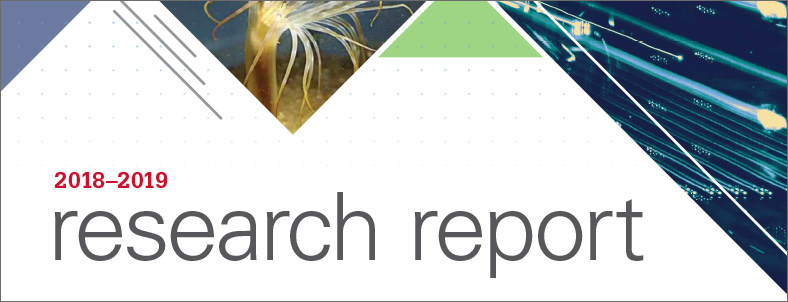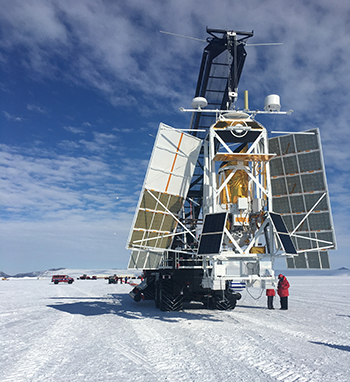The field of ultra-high energy (UHE) cosmic neutrino experiments has entered an exciting phase, according to Amy Connolly, Ph.D., a physics professor at The Ohio State University. Scientists there have accumulated enough data to reach a mature understanding of detector designs in the radio environment in Antarctica. They are well positioned for a potential discovery and poised to determine the future of the field for decades to come, according to Connolly.
“We search for the highest energy neutrinos in the universe as the only probes of cosmic distances at their energy regime, with experiments designed to detect them through a radio signature,” said Connolly, also a researcher at the Center for Cosmology and AstroParticle Physics (CCAPP) at Ohio State. “Ultra-high energy (UHE) neutrino interactions probe much higher center-of-mass energies than in collisions produced at the Large Hadron Collider and thus could point to new physics.”
Leveraging storage systems and each of the high performance computing clusters at the Ohio Supercomputer Center (OSC), her group leads simulations for two neutrino detection projects: the Antarctic Impulsive Transient Array (ANITA) balloon project and the Askaryan Radio Array (ARA) project.
The ANITA project is an international, NASA-funded stratospheric balloon payload detector program that over four flights has scanned the Antarctic ice for UHE neutrinos from its near-40-kilometer altitude. The ARA project is an array of five stations of antennas deep underground that measures the enhanced radiofrequency radiation emitted during the interaction of neutrinos with the Antarctic ice. Two next-generation experiments of each type have been proposed, named Payload for Ultrahigh Energy Observations (PUEO—not coincidentally the name of a subspecies of the Hawaiian short-eared owl) and Radio Neutrino Observatory (RNO), respectively.
“We utilize a supercomputer to analyze large data sets to perform leading searches for UHE neutrinos, run sophisticated simulations to design future experiments with optimal neutrino sensitivity and perform theoretical calculations to interpret the implications of our results,” Connolly said. “That’s why it’s important that we can use OSC, because we can run lots of jobs in parallel and be able to examine whole sets of data in a reasonable amount of time.”
During the bulk of the ARA analysis period, a small subset (a “burn sample” of approximately 10 percent) of the data is analyzed on the Owens and Pitzer Clusters in order to estimate backgrounds and find an optimal set of cuts. Once cuts are finalized, then the entire data set is run through to find the outcome of the search. For ANITA, Connolly’s group uses the Owens Cluster to analyze the full dataset.
“We are also taking the lead on exploring new ideas that could potentially have a large payoff for the field, namely using genetic algorithms to improve neutrino detectors and a potentially gamechanging technique to use radar to detect neutrinoinduced particle cascades.”
Connolly initiated the genetic-algorithms research to improve existing UHE neutrino experiments by leveraging this form of machine learning. The project, known as GENETIS (Genetically Evolving NEuTrIno TeleScopes), is led by undergraduate students and involves linking genetic algorithms together with state-of-the-art time domain modeling and the simulations of experiments in one complete loop.
The novel radar technique came to Ohio State with the recent arrival of CCAPP Postdoctoral Fellow, and now Ohio State Presidential Postdoctoral Scholar, Steven Prohira, Ph.D. Prohira’s technique involves transmitting a continuous wave signal from within the ice in order to look for reflections from neutrinoinduced particle cascades. This will require running simulations of the particle showers that neutrinos induce, the characteristics of the received signal after reflection from the cascade and its dependence on a variety of characteristics.
___________
PROJECT LEAD // Amy L. Connolly, Ph.D., The Ohio State University
RESEARCH TITLE // Searching for ultra-high energy cosmic neutrinos and designing next-generation detectors at the OSC
FUNDING SOURCES // National Aeronautics and Space Administration, National Science Foundation
WEBSITE // u.osu.edu/connolly

